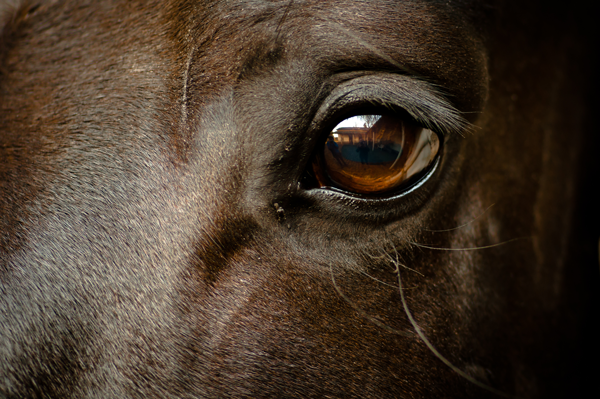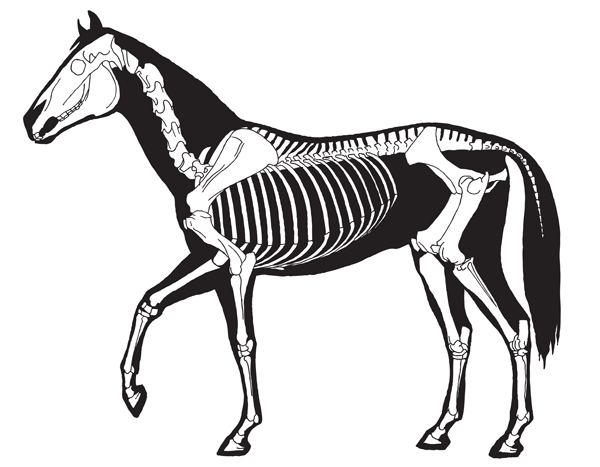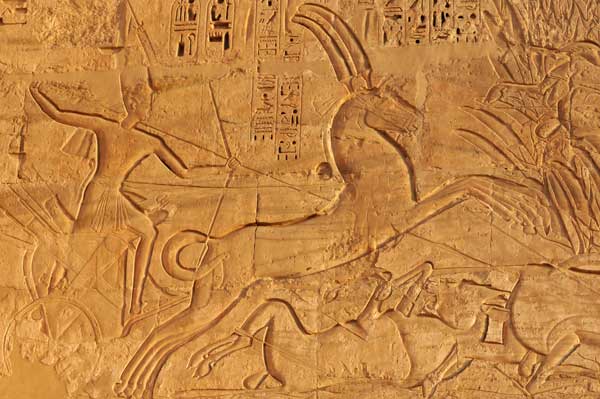Anyone who loves horses knows that they’re majestic, magnificent, athletic, and absolutely fascinating animals. They also have some unique attributes and history. Let’s take a look at some 12 fun facts about horses.
1. Horses have large hearts.
2. Horses are incredibly intelligent.
If you’ve spent much time around horses, this probably comes as no surprise, but horses are incredibly intelligent. In fact, studies have shown that horses understand variances in human facial expressions, are capable of indicating preferences, and can exhibit at least some degree of empathy.
3. Horses have exceptionally large eyes.
Horses have exceptionally large eyes (some of the largest eyes of any mammal), and the prominent placement of the eyes on the sides of a horse’s face results in vision that is known as monocular. Humans have binocular vision, meaning that the eyes work together to view the same scene. With monocular vision, horses see two different scenes independently.

4. The average gestation period of equines is approximately 340 days.
This is similar to the gestation periods of llamas, alpacas, and seals. Variations can and do occur, but most mares typically carry their foals in the range of 320 to 370 days. Situations beyond either extreme aren’t unheard of, but they aren’t common, either. Mares carrying colts (male foals) tend to have slightly longer gestation periods than mares carrying fillies (female foals), and foals born in January tend to have shorter gestations than foals born later in the season.
5. Horses come in a variety of different colors.
Bay, black, buckskin, cremello, chestnut, champagne—the genetics behind equine coat colors can be complicated! Thankfully, some of the rules are easy, so here are a couple to keep in mind:
◆ A gray horse must have at least one gray parent.
◆ Two chestnut horses will always produce a chestnut foal.
6. Horses have 205 bones.
Envision the skeletal system of the human body, and then mentally compare it to the skeletal system of a horse. Which one do you think has the higher number of bones? The answer: they’re virtually identical! Adult humans have 206 bones, while most adult horses have 205 bones.

7. Arabian horses specifically have a unique skeleton.
And speaking of bones, here’s a quick shout-out to the amazing Arabian’s special skeleton. With only five lumbar vertebrae in their backs (most horses have six) and one less rib, Arabians tend to have shorter backs than other horse breeds.
8. Some horse breeds have amazing speed.
As anyone who has ever watched a horse race can attest, horses are capable of achieving impressive rates of speed. Although the Thoroughbred is the breed that comes to mind when talking about speedy horses, Thoroughbreds generally excel at carrying their speed over long distances of ¾ of a mile to 1½ miles or more. For short distances, the American Quarter Horse is actually the fastest breed, capable of sustaining 45 mph for ¼ mile.
9. You can tell a horse’s age by its teeth.
Don’t look that gift horse in the mouth, because you may just discover that he’s a bit older than you expected! Quaint proverbs aside, it’s possible to determine a horse’s age with a fair degree of accuracy simply by examining his teeth. The presence or absence of certain deciduous teeth, the particular markings on the teeth, and the angle of the upper and lower incisors can all be used to help estimate the age of a horse.
10. Horses played a role in ancient Egypt.
Horses were an important part of ancient Egyptian history, but only after their introduction to the country in about 1600 BC. The famous pharaoh Ramses the Great (Ramses III) even recorded the names of his two chariot horses; they were “Victory in Thebes” and “Mut is Contented.”

11. Horses also have an important role in American history.
Think of all the iconic scenes from history: hardworking horses on cattle drives, farm horses plowing fields, carriage horses in cities, Pony Express riders galloping across the West. But all of this is fairly recent history, as horses have only been present in North America for about 500 years. Columbus—and shortly after, Spanish explorers—brought the first horses across the Atlantic.
12. The most popular breed in the U.S. is the American Quarter Horse.
And for our final of 12 facts about horses: While the world is populated with hundreds of different horse and pony breeds, the most popular breed in the United States is the American Quarter Horse. The American Quarter Horse Association has registered nearly 6 million horses worldwide since 1940.
After these 12 fun facts about horses, what do you find fascinating about our equine companions? Share your stories in the comments!






I was surprised most about the skeleton facts, and that horses have one less bone than we do. Wow!
Thanks for the facts – fascinating reading!